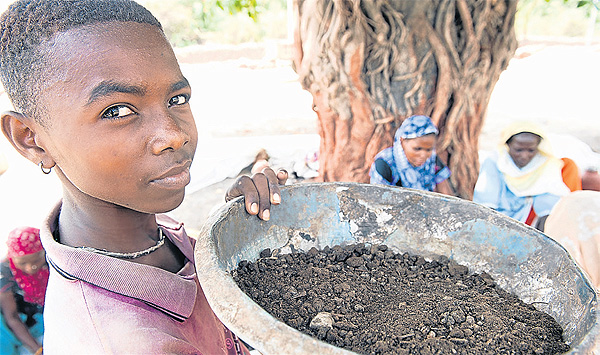Do you want to see a habshi?” asks my guide, pointing to an African boy sitting under a tree as we enter Gir in Gujarat — home to the famous Asiatic lions.

Siddi community members dance and play to entertain tourists
“Habshi” or “negro” are the words used (not pejoratively) by the locals for Siddis — the people of African origin sprinkled throughout Junagadh district of Gujarat.
With their dark skin, tightly curled hair, snub noses and thick lips, the Siddis are unmistakably African. Yet they are as much Gujarati as the next fellow.
They speak Gujarati and broken Hindi with the local accent and share the same mannerisms and general demeanour as others in the region.
“They say our ancestors were brought here as slaves from Africa more than 500 years ago,” says Ibhrahim, a Siddi who invites me in his house with the familiar Gujarati hospitality. He is a guide at Gir National Park, and existential issues are the last thing on his mind.
He, along with other Gir inhabitants, is engrossed with the daily.
The Supreme Court had ordered some of the Asiatic lions to be sent to Madhya Pradesh (MP) state in April 2013. He skips the questions about his pedigree to talk about it.
“The lions will be poached in Madhya Pradesh. Poaching is rampant there. The poachers from Madhya Pradesh come here to kill lions. Two years ago the poachers from MP had killed two lions and two cubs,” he said.
He is, however, quick to lay claim to his African ancestry to bolster his argument.

A Siddi boy at work in Zambur village.
“Africans are inextricably linked to lions. Wherever there are lions you have Africans. There are no Siddhis in Madhya Pradesh. That is not the lions’ home,” he says.
In Zambur village 20 kilometres from Gir, where many Siddi families live together, it is a veritable Africa. But only from a distance. The villagers are so culturally, socially and linguistically assimilated here that were they to be transplanted to Africa they would be completely lost.
There are more than 50 thousand Siddis in India making for a unique racial minority along with the Parsis, Jews and the Chinese. But unlike other groups, the Siddis have lived on the margins of the society. They have always been poor, eking out a living in rural pockets of India. One third of them live in Karnataka. Others live in Gujarat and a tiny fraction are found in Maharashtra.
Just like other inhabitants they are culturally diverse from each other in all these states. They also do not share the same religion. They are Christians in Maharashtra and are Sufi Muslims in Gujarat.
The Siddis were brought to India almost 500 years ago as slaves by Arab and Portuguese merchant. Some Siddis also came as merchants but most of them worked as slaves and since them remained in India as part of the African diaspora.
Over time the Siddis were completely Indianised but they kept their African genes alive by marrying within their community.
Where do the Siddis fit in the complex caste system of India? In pre-independence India they were outside it and were put even below the untouchables in the social hierarchy. Today, along with several other Indian tribes, the government of India accords them Scheduled Tribe status, making them eligible for reservations in government jobs.
But Bosco Kaweesi, president of the Siddi Educational Society, has been fighting for a special status for the Siddis. According to him, the Siddis face discrimination including racism wherever they go in India and the government needs to take some steps to alleviate their plight.
“Only a few weeks ago a Siddi man was harassed by a judge when she demanded to know where he was from. His reply that he was Indian and had his ancestral village in rural Maharashtra did not cut any ice with her,” he says.
Most of the Siddis are farmers or labourers and some, like the Siddis of Gir, become guides or drivers.
In tourist-crowded Gir, they have cashed in on their African lineage by evolving an exotic dance which involves fire breathing, gymnastics and a lot of dancing to the beat of the drums. Tourists are regaled by what they see as an African dance by Africans.
Many, however, claim that Siddi music has some resonance of Africa in its rhythms, calling to mind the southeast African Bantu tribes to which they owe their lineage.